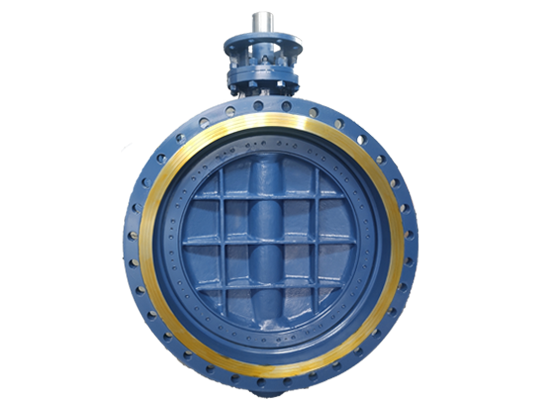- English
- Español
- Português
- русский
- Français
- 日本語
- Deutsch
- tiếng Việt
- Italiano
- Nederlands
- ภาษาไทย
- Polski
- 한국어
- Svenska
- magyar
- Malay
- বাংলা ভাষার
- Dansk
- Suomi
- हिन्दी
- Pilipino
- Türkçe
- Gaeilge
- العربية
- Indonesia
- Norsk
- تمل
- český
- ελληνικά
- український
- Javanese
- فارسی
- தமிழ்
- తెలుగు
- नेपाली
- Burmese
- български
- ລາວ
- Latine
- Қазақша
- Euskal
- Azərbaycan
- Slovenský jazyk
- Македонски
- Lietuvos
- Eesti Keel
- Română
- Slovenski
- मराठी
- Srpski језик
How to Control Flow with a Butterfly Valve?
2024-09-20

What are the advantages of using a Butterfly Valve?
One of the advantages of using a butterfly valve is that it has a simple design, making it easy to install and maintain. It also has a low-pressure drop, allowing for higher flow rates and lower energy costs. Another advantage is that it can be used for both on/off and throttling applications.
What materials are used to make Butterfly Valves?
Butterfly valves can be made from a variety of materials including stainless steel, carbon steel, PVC, and cast iron. The material used depends on the specific application and the fluid that is being transported through the valve.
What are the different types of Butterfly Valves?
There are three main types of butterfly valves: concentric, double eccentric, and triple eccentric. Concentric butterfly valves have a symmetrical disc and are suited for low-pressure applications. Double eccentric butterfly valves have a slightly offset disc, which reduces seat wear and makes them suitable for high-pressure applications. Triple eccentric butterfly valves have a cone-shaped seating surface, making them ideal for high-temperature and high-pressure applications.
How do you control flow with a Butterfly Valve?
Flow can be controlled with a butterfly valve by adjusting the position of the disc. When the disc is partially open, it allows a certain amount of fluid to flow through the valve. By adjusting the disc, the amount of fluid that flows through the valve can be increased or decreased as needed.
In conclusion, butterfly valves are a popular choice in many industries due to their simple design, low-pressure drop, and versatility. They can be used for a variety of applications and are available in a range of materials and types. When it comes to controlling flow, butterfly valves offer an effective and efficient solution.
Zhejiang Liangyi Valve Co., Ltd. is a leading manufacturer and supplier of butterfly valves. With years of experience in the industry, we pride ourselves on providing high-quality products and excellent customer service. Visit our website at https://www.lyv-valve.com to learn more about our products and services. For inquiries, please email us at sales@gntvalve.com.
Research Papers:
Bourque, A., 2019. A review of butterfly valve positioners. Journal of Fluid Mechanics, 876, pp.632-649.
Choi, H.J., Park, C.M. and Kim, H.G., 2018. CFD analysis of flow characteristics in a butterfly valve. Applied Sciences, 8(8), p.1320.
Lee, M.S., Lee, H.J. and Kim, J.H., 2017. Wear of butterfly valve seats under pulsating flow conditions. Journal of Mechanical Science and Technology, 31(8), pp.3955-3960.
Lin, C.W., Liao, Y.C. and Chung, H.L., 2020. Study on the cavitation erosion mechanism of butterfly valves. Journal of Hydraulic Research, 58(4), pp.515-526.
Pal, R. and Shanmugasundaram, K.K., 2016. Flow-induced vibrations and noise analysis of butterfly valves using FEM. Journal of Mechanical Engineering, 52(2), pp.95-104.
Pourmahmoud, N., Behravesh, A. and Taheri-Tayeb, S.A., 2020. Measurement of butterfly valve hydrodynamic torque with different angles of attack. International Journal of Fluid Mechanics Research, 47(6), pp.532-541.
Shi, X., Xia, C. and Chen, L., 2019. Numerical simulation and performance analysis of an ultra-low-temperature butterfly valve. Journal of Thermal Science and Engineering Applications, 11(6), p.061015.
Vijayakumar, K. and Gupta, R.K., 2017. Numerical simulation of viscous flow around a butterfly valve. Journal of Fluids Engineering, 139(3), p.031105.
Wan, S., Wu, Y., Gao, J. and Yang, J., 2018. Performance comparison of eccentric plug valve and butterfly valve in cooling water system. Journal of Thermal Science and Engineering Applications, 10(5), p.051011.
Yuan, C., Zhao, X., Li, X., Liu, J. and Ding, H., 2019. Numerical investigation on flow-induced noise reduction on butterfly valves. Journal of Mechanical Science and Technology, 33(7), pp.3373-3380.
Zhang, J.J. and Zhao, Y.C., 2016. Structural optimization of a butterfly valve based on flow-induced vibration and fluid-structure interaction analyses. Journal of Mechanical Science and Technology, 30(9), pp.4175-4180.




